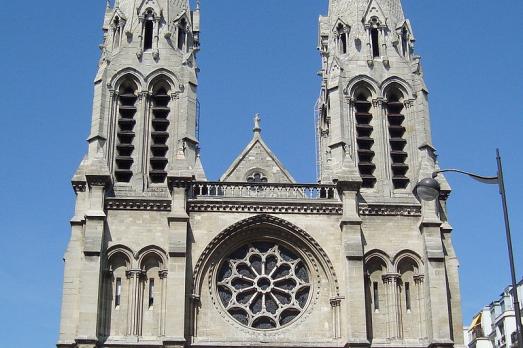
Église Saint-Jean-Baptiste de Belleville
Paris, FR
The Saint-Jean-Baptiste Church of Belleville, built between 1854 and 1859, is one of the first neo-Gothic churches of Paris.
Here you can search for a building to visit. You can use the map find destinations, or you can use the filters to search for a building based upon what different criteria.

Paris, FR
The Saint-Jean-Baptiste Church of Belleville, built between 1854 and 1859, is one of the first neo-Gothic churches of Paris.
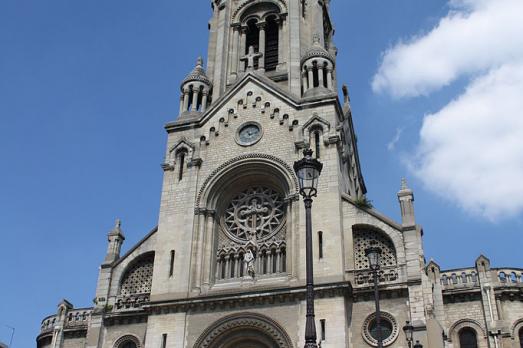
Paris, FR
The church of Notre-Dame-de-la-Croix, built between 1863 and 1880, combines neo-Romanesque and neo-Gothic elements. The present church was designed by the architect Louis-Jean-Antoine Héret (1821-1899). It is also remarkable for its 78-metre high bell tower and the monumental staircase that precedes its façade. It is one of the largest churches in Paris (the 4th largest church in Paris).
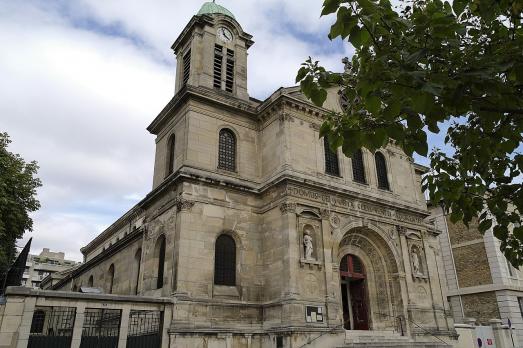
Paris, FR
The Saint-Jacques-Saint-Christophe de la Villette church was built between 1841 and 1844 on top of an old 14th-century church. The considerable increase in population in the 19th century, following, in particular, the construction of the Ourcq canal, justified the construction of a new church and a royal order of 17 November 1837 authorised the commune to acquire land for this purpose. The architect of the church was Paul-Eugène Lequeux (1806-1873), architect of the neighbouring district of Saint-Denis and designer of several churches, including Notre-Dame-de-Clignancourt in the 18th arrondissement of Paris.
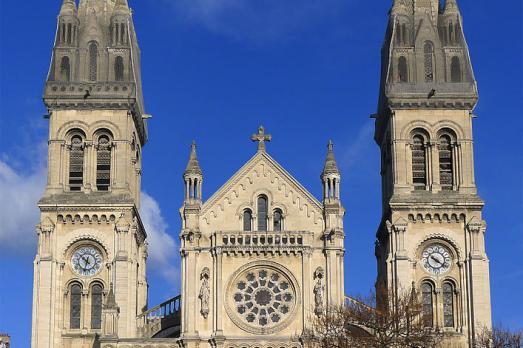
Paris, FR
The Saint-Ambroise church was built in the eclectic style between 1863 and 1868 on a former chapel dating from 1659. The chapel was destroyed during the construction of the Boulevard du Prince Eugène, renamed Boulevard Voltaire in 1870. During the Commune in 1871, without preventing worship, the church was the headquarters of the Ambroise club, known as the proletarians' club, which included feminist speakers. This club published the newspaper "Le prolétaire".
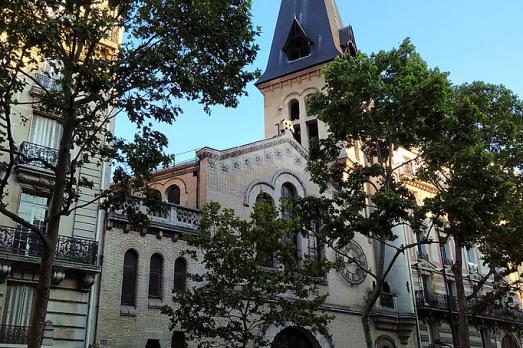
Paris, FR
The church of Saint-Antoine-des-Quinze-Vingts was built in 1902-03. The church is built of brick and stone on a basilica plan in the neo-Romanesque style. Some parts and decorations are typical of the Art Nouveau of the Nancy School. The façade is made of brick and stone. It opens with a scalloped semi-circular portal and three lancet windows.
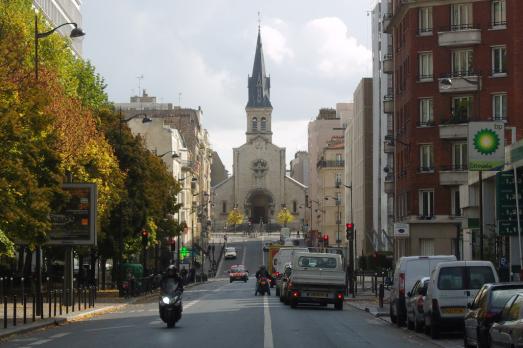
Paris, FR
The church of Notre-Dame de la Gare is a neo-Romanesque church which was consecrated on 11 November 1859. The construction of the church began in 1847 when the parish territory was in the commune of Ivry. Claude Naissant was the architect.
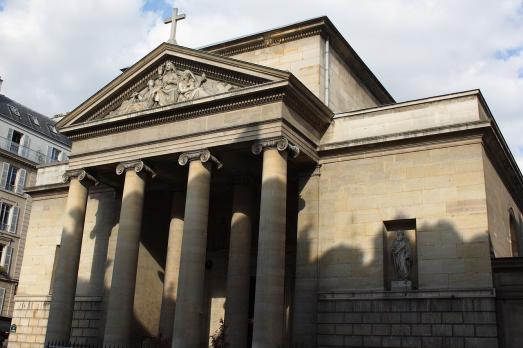
Paris, FR
The church was built during the Restoration in the style of Roman basilicas. On its site stood a convent built for the Benedictines of the Blessed Sacrament. It was Etienne-Hippolyte Godde who in 1826 was commissioned by the city of Paris to build the current church on this site. The first stone was laid on 15 September 1826: a medal by the engraver Ursin Vatinelle, bearing the effigy of Charles X and the design of the projected façade, commemorates the event.
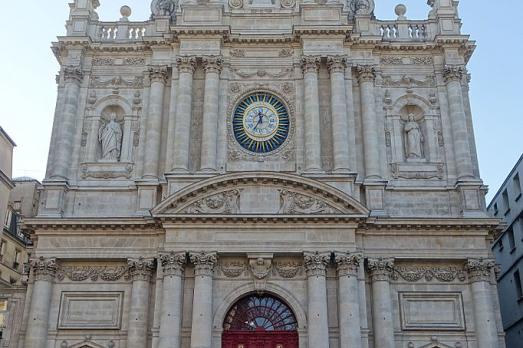
Paris, FR
The church was built between 1627 and 1641 by the Jesuits with the financial support of Louis XIII. The inauguration Mass is celebrated by Cardinal Richelieu. It is one of the first churches to emancipate itself from the Gothic tradition. Indeed, the plan is inspired by the Gesù church in Rome. It was first restored in the 19th century by the architect Victor Baltard, then completely renovated in 2012.
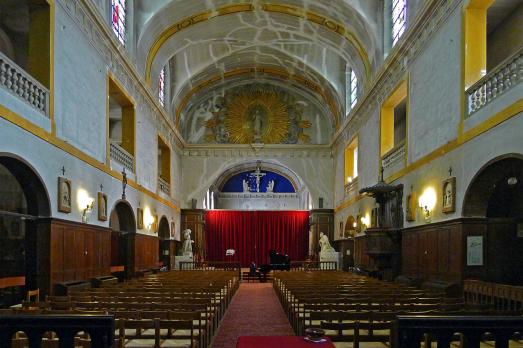
Paris, FR
Built in 1623, the church was modified from 1828 to 1832. Its porch was rebuilt by Baltard in 1855. First chapel of the Immaculate Conception in 1623, it became the parish church of Saint Francis of Assisi in 1791, then Saint John Saint Francis in 1797. In 1970, the church was attributed to the Armenian Catholic community. His two organs are among the first made in Paris by Cavaillé-Coll and his son in 1844. Statue of Germain Pilon (16th century) depicting Saint Francis in ecstasy, and four paintings by Brother Luke (late 17th century) depicting Saint Francis.
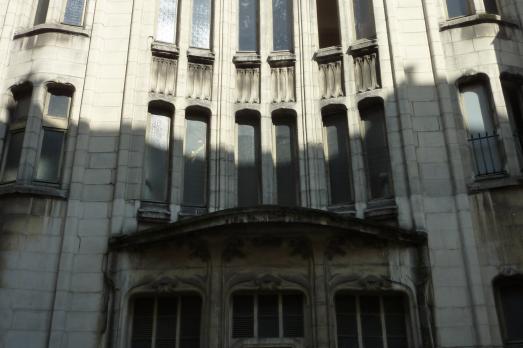
Paris, FR
The Agudas Hakehilos (Rue Pavée) Synagogue in Paris is an Orthodox synagogue completed in 1914 by architect Hector Guimard. This brick building still serves as a synagogue.

new
Bodø has evolved from a picturesque fishing village to a bustling cultural epicentre in the northeastern Norwegian county of Nordland. Here is a list of the top churches to visit in Bodø, the only European Capital of Culture above the Arctic Circle.

The small Austrian spa town of Bad Ischl is known for its beautiful nature and peaceful atmosphere. Emperor Franz Joseph I of Habsburg, described it as an "earthly paradise". Here is a list of religious heritage sites you should visit.
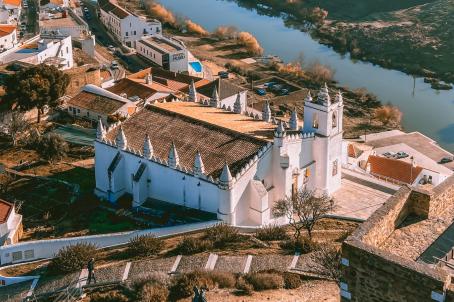
History is full of examples of temples converted to serve another religion. Here are 4 Christian places of worship that were important mosques in the past. Did you know them all?